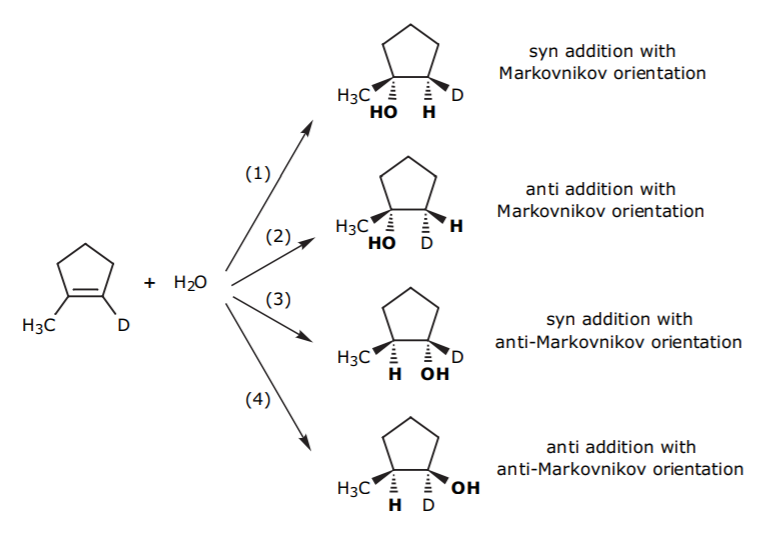17.2: Markovnikov Orientation vs. Syn or Anti Addition
- Page ID
- 216686
The term Markovnikov orientation refers to the bonding preference of E and Y for carbon atoms a or b. The following example shows how a proton acid HY can add to the π-bond of an unsymmetrical alkene with either Markovnikov or anti-Markovnikov orientation, depending on the reaction conditions used.

The terms syn addition and anti addition refer to the preference of H and Y to add to the π-bond from the same side of the C=C plane (syn addition), or from opposite sides (anti addition):

The following example showing the addition of water to 1-methylcyclohexene (deuterium-labeled) illustrates the four possible combinations.

Two reactions of interest to us, oxymercuration-demercuration and hydroboration-oxidation, follow paths (2) and (3) respectively.


